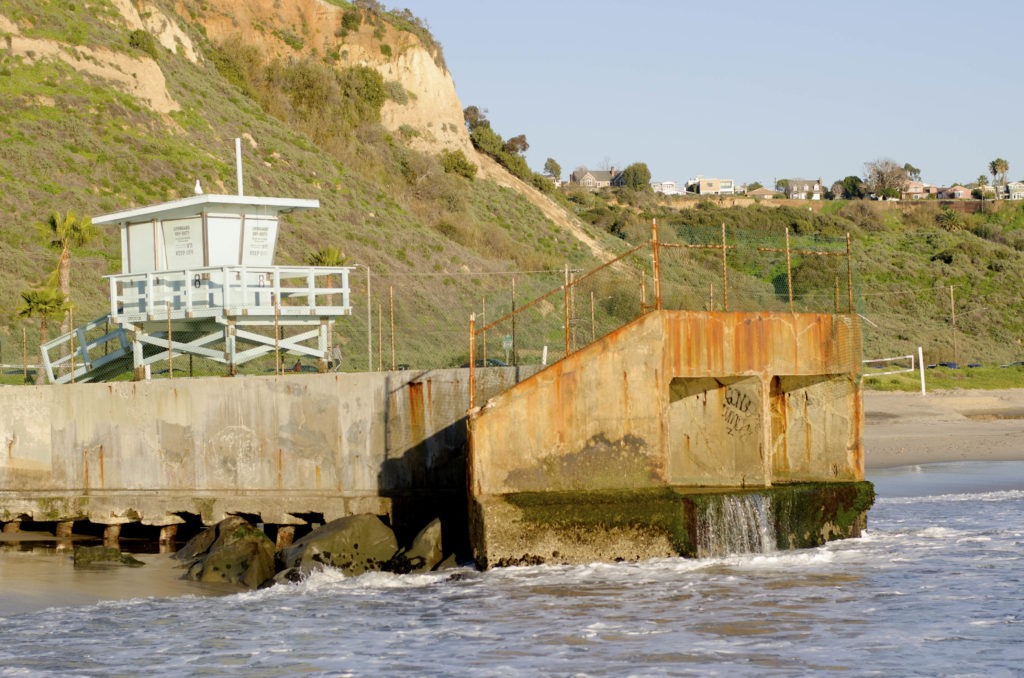
By Keldine Hull
Two years after California experienced its wettest year since record-keeping began in 1895, the rain continues to fall, ending drought conditions in several parts of California long accustomed to carefully monitoring water usage.
While rainfall is welcome, swimmers, surfers and anyone else who frequents California beaches, especially in Santa Monica Bay, are reminded to be cautious when it comes to going into the water in winter months.
“When rain falls in developed areas, the rainwater becomes stormwater runoff and washes debris and pollutants into nearby rivers, streams and stormwater drains, which eventually flow into the ocean without treatment. Immediately during and after the storm, you can often see evidence of runoff by a change in ocean color from increased sediment in the water right off the beach.” said Katie Day, Staff Scientist for the Surfrider Foundation, “Unfortunately, it’s what you don’t see that can be much more dangerous. Stormwater brings bacteria and other pathogens to the beach where it can cause people to get sick.”
Beachgoers are advised to wait at least 72 hours before entering the water after rainfall, the time it takes for bacteria and other pollutants to dilute back down to safe concentrations. Contributing factors like water flow and currents impact how quickly beaches recover from pollutants in the water.
“Beaches and bays that have high water flow and strong currents can sometimes dilute these pollutants faster, while areas with weaker currents and low water flow may require more time- up to ten days. In addition to dilution, the sunlight, saltwater, and even other marine life can help kill excess bacteria over this time- period,” Day said.
Location is another factor in determining which beaches are at greater risk of pollutants following rainfall
“Beaches near river and stormwater outfalls experience more severe stormwater pollution, as these areas border the immediate discharge areas for debris and pollution swept in from urban areas,” Day said. “Alternatively, beaches in undeveloped, or less developed, watersheds, such as protected areas or state parks, are less susceptible to stormwater pollution, as there are less pollutants and less runoff since rain gets better absorbed by soil and the natural landscape.”
Despite the warnings, some surfers and swimmers might still feel compelled to go into the water too soon after rainfall, a risk that poses a harmful threat to their health.
“Skin infections and rashes; eye, ear and nose infections; and gastrointestinal symptoms are some of the more common yet minor afflictions that can be picked up by surfing or swimming in the ocean after it rains. And there’s worse with MRSA, Vibrio and other life-threatening diseases that are possible to contract if exposed to human sewage in recreational waters.”
According to the Centers for Disease Control (CDC) MRSA (methicillin-resistant Staphylococcus aureus) is considered a “Serious Threat”.
Founded by a group of surfers in 1984, Surfrider Foundation has been dedicated to protecting the ocean and beaches through programs and campaigns designed to educate, create solutions, and raise awareness. Once stormwater pollutants and bacteria infiltrate coastal regions, there’s very little that can be done; however, according to Day, there are preventative measures that could keep stormwater from reaching coasts in the first place.
“This can be accomplished by increasing the amount of permeable landscapes that can capture and absorb rainfall or excess water before it gets to the coast. Examples include the preservation of natural areas and habitats like forests and wetlands, the use of permeable roads and sidewalks, and the incorporation of Ocean Friendly Gardening principles that collect, retain and filter stormwater.” Day said, “Ocean Friendly Gardens can be used at private residences, but also along city streets and developments to act as bioswales. Some cities even offer rebate programs to help landowners transition their yards and outdoor areas to Ocean Friendly Gardens to protect beach water quality and reduce water use. In Santa Monica alone, there are two rebate programs including the Rain Harvest Rebate program and the Cash for Grass Rebate program.”
To learn more about the Ocean Friendly Gardening program, visit: go.surfrider.org/ofg.”

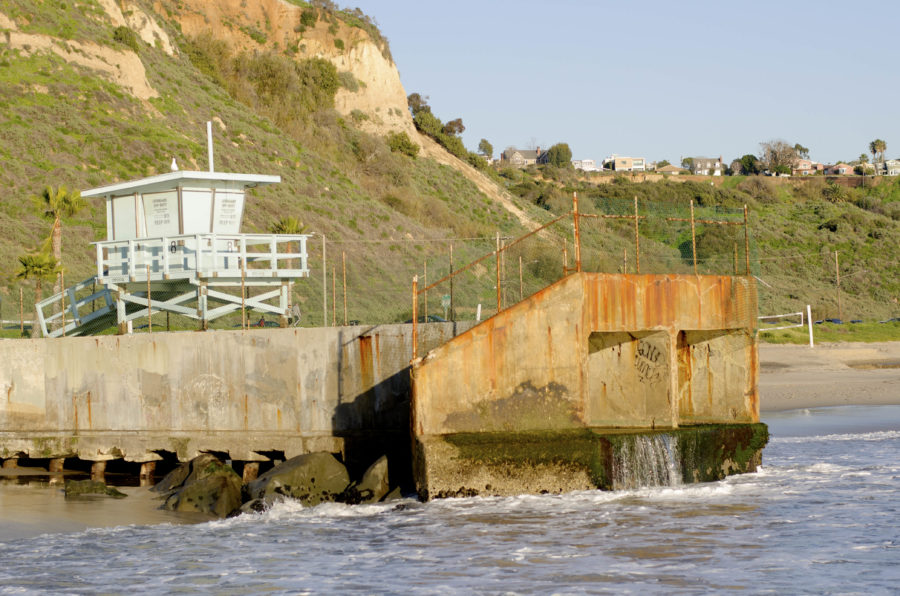
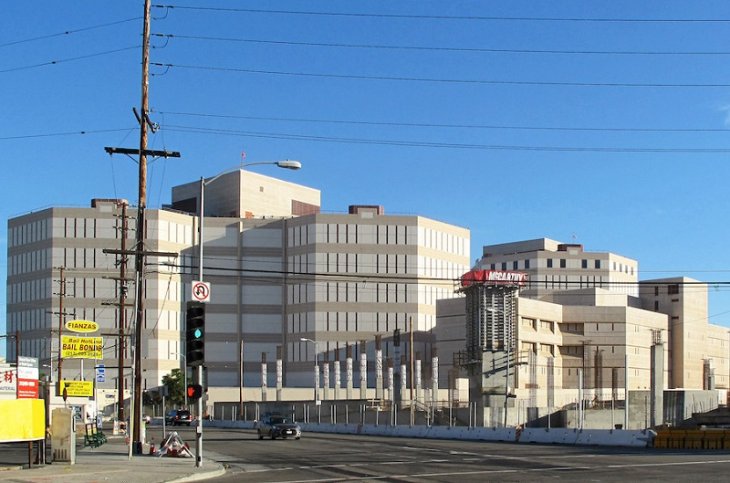





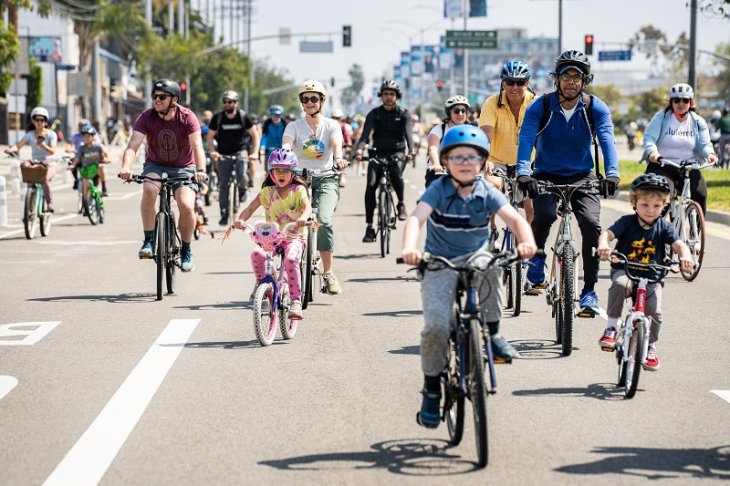





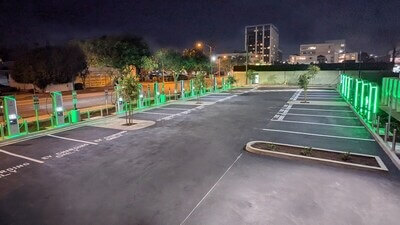

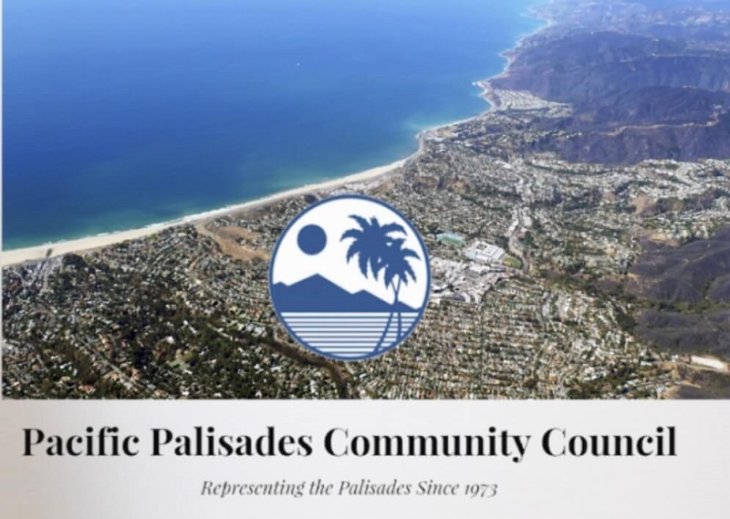









You must be logged in to post a comment.